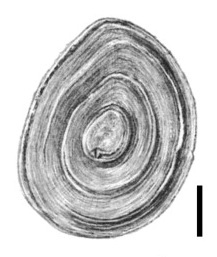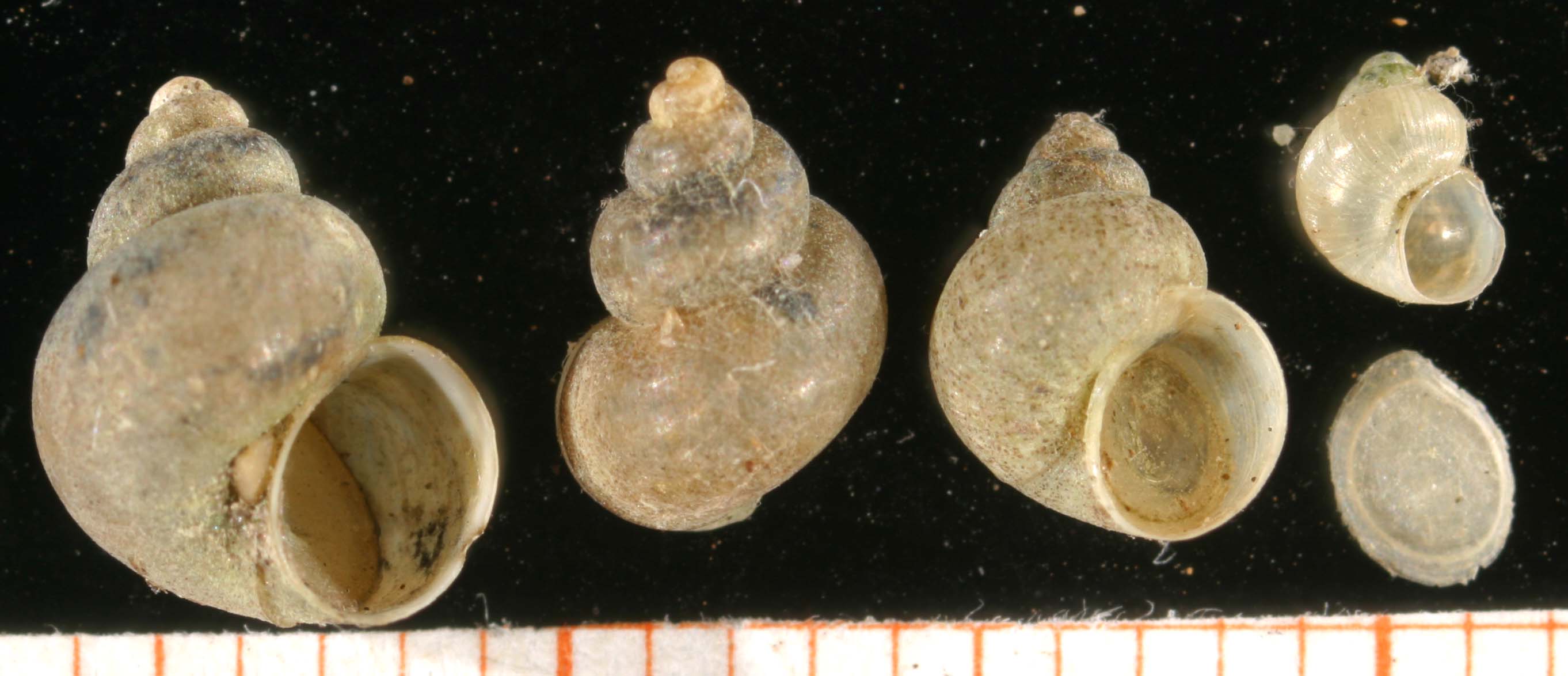|
List Of Non-marine Molluscs Of Sweden
The non-marine molluscs of Sweden are a part of the molluscan fauna of Sweden ( wildlife of Sweden). There are unknown species of gastropods (52 species of freshwater gastropods, unknown species of land gastropods) and 32 species of bivalves living in the wild—84 species of freshwater molluscs altogether. von Proschwitz T. (February 23, 2001). "Svenska sötvattensmollusker (snäckor och musslor) - en uppdaterad checklista med vetenskapliga och svenska namn". Naturhistoriska riksmuseetPDF Freshwater gastropods Freshwater gastropods in Sweden include: Neritidae * '' Theodoxus fluviatilis'' (Linnaeus, 1758) Viviparidae * ''Viviparus contectus'' (Millet, 1813) * ''Viviparus viviparus'' (Linnaeus, 1758) Thiaridae * ''Melanoides tuberculata'' (O. F. Müller, 1774) - non-indigenous Bithyniidae * '' Bithynia tentaculata'' (Linnaeus, 1758) * ''Bithynia leachii'' (Sheppard, 1823) * '' Bithynia transsilvanica'' (E. A. Bielz, 1853) - regionally extinct in Sweden Hydrobiidae ... [...More Info...] [...Related Items...] OR: [Wikipedia] [Google] [Baidu] |
Viviparus Viviparus
''Viviparus viviparus'' is a species of large freshwater snail with a gill and an operculum, an aquatic gastropod mollusk in the family Viviparidae, the river snails. This species is a viviparous (ovoviviparous) snail. Description The height of the shell is 25–35 mm. The width of the shell is 20–26 mm. Males are 2 mm smaller than females of the same age. The shell colour is dark greenish brown or greyish yellow, with three reddish brown spiral bands. The shell is striated but has no hammer pattern. The shell apex is blunt (more pointed in other ''Viviparus'' species). The shell has 5.5-6 weakly convex whorls. The last whorl is relatively large compared to that of other ''Viviparus'' species. The umbilicus is narrow. The animal can lock itself in behind a round lid which shows concentric striations (the operculum). This allows it to protect itself from dehydration, for several months if necessary. Once closed the operculum is flush with the opening of the sh ... [...More Info...] [...Related Items...] OR: [Wikipedia] [Google] [Baidu] |
Amnicolidae
Amnicolidae is a family of small freshwater snails with a gill and an operculum, aquatic gastropod mollusks in the superfamily Rissooidea. This family is in the clade Littorinimorpha (according to the taxonomy of the Gastropoda by Bouchet & Rocroi, 2005). This family was previously considered to be a subfamily of Hydrobiidae. Subfamilies The family Amnicolidae consists of 3 subfamilies (according to the taxonomy of the Gastropoda by Bouchet & Rocroi, 2005): *Subfamily Amnicolinae Tryon, 1863, synonymised with: **Tribe Erhaiini Davis & Kuo, 1985 **Subfamily Lyogyrinae Pilsbry, 1916 **Subfamily Parabythinellinae Radoman, 1976 **Tribe Pseudobythinellini Davis & Chen, 1992 *Subfamily Baicaliinae P. Fisher, 1885, synonymised with: **Subfamily Liobaicaliinae B. Dybowski & Grochmalicki, 1913 **Subfamily Turribaicaliinae B. Dybowski & Grochmalicki, 1917 Genera *Subfamily Amnicolinae Tryon, 1863 **''Akiyoshia'' Kuroda & Habe, 1954Davis G. M. & Rao S. (1997). "Discovery of ''Erhai ... [...More Info...] [...Related Items...] OR: [Wikipedia] [Google] [Baidu] |
Hydrobia Neglecta
'' Hydrobia acuta neglecta'' is a European subspecies of small brackish water snail with a gill and an operculum, an aquatic gastropod mollusk in the family Hydrobiidae. Distribution This species which has a distribution type: oceanic temperate occurs on the coasts of the North Sea, in countries and islands including: * Iceland * Denmark * Sweden * Great Britain * Ireland * France Ecology ''Hydrobia acuta neglecta'' occurs in coastal lagoons where incoming freshwater dilutes sea water. The preferred salinity range is 10-24 ‰. Status The status of this taxon is uncertain. ''Hydrobia neglecta'' is treated as a full species in Fauna Europaea, but in 1995 it had been suggested that ''H. neglecta'' is a synonym of the Mediterranean ''Hydrobia acuta'' (Draparnaud). Then a ''neglecta'' colony in northern France was shown to be ''acuta''. In 2000 a molecular study concluded that north-west European populations were not specifically distinct from the Mediterranean ''Hydrobia a ... [...More Info...] [...Related Items...] OR: [Wikipedia] [Google] [Baidu] |
Hydrobia Ulvae
''Peringia ulvae'' (or ''Hydrobia ulvae''), common name the Laver spire shell or mudsnail, is a European species of very small aquatic snail with gills and an operculum, a gastropod mollusk in the family Hydrobiidae.Gofas, S. (2010). ''Hydrobia ulvae'' (Pennant, 1777). In: Bouchet, P.; Gofas, S.; Rosenberg, G. (2010) World Marine Mollusca database. Accessed through: World Register of Marine Species at http://www.marinespecies.org/aphia.php?p=taxdetails&id=140126 on 2010-11-27. This is arguably a marine snail, but it is often also listed as a non-marine species because it tolerates brackish water and lives in salt marshes and similar habitats. ''Peringia ulvae'' is the type species of the genus ''Peringia''. Distribution This species occurs on the coasts of the Baltic Sea, the White Sea the Eastern Atlantic and the western Mediterranean Sea, (the Mediterranean records may be in error) including: * Great Britain * Ireland * The Netherlands The type locality is "on the shore ... [...More Info...] [...Related Items...] OR: [Wikipedia] [Google] [Baidu] |
Hydrobia Ventrosa
''Ecrobia ventrosa'', common name spire snail, is a European species of small brackish water snail with a gill and an operculum, an aquatic gastropod mollusk in the family Hydrobiidae. Distribution This species occurs on the coasts of: * Iceland * Norway * Great Britain * Ireland * France * Baltic Sea * Black Sea * White Sea Горбушин А. М. О видовом составе моллюсков рода Hydrobia (Gastropoda, Prosobranchia) в Белом море //Зоол. журн. – 1993. – Т. 71. – №. 9. – С. 47–56. The distribution type is coastal Mediterranean–Atlantic. Description For terms see gastropod shell The 3–4 x 1.5–2 mm. shell has 5–7 convex whorls which are slightly more convex than those of ''Hydrobia acuta neglecta''. Smaller shells with 5 whorls are slightly less slender than those of Hydrobia neglecta. The suture is deep. The aperture is rounded upside (or only slightly pointed) and attached to the last whorl. The lip i ... [...More Info...] [...Related Items...] OR: [Wikipedia] [Google] [Baidu] |
Potamopyrgus Antipodarum
The New Zealand mud snail (''Potamopyrgus antipodarum'') is a species of very small freshwater snail with a gill and an operculum. This aquatic gastropod mollusk is in the family Tateidae. It is native to New Zealand, where it is found throughout the country, but it has been introduced to many other countries, where it is often considered an invasive species because populations of the snail can reach very high densities. Shell description The shell of ''Potamopyrgus antipodarum'' is elongated and has dextral coiling, with 7 to 8 whorls. Between whorls are deep grooves. Shell colors vary from gray and dark brown to light brown. The average height of the shell is approximately 5 mm (\begin \frac \end in); maximum size is approximately 12 mm (\begin \frac \end in). The snail is usually 4–6 mm in length in the Great Lakes, but grows to 12 mm in its native range. It is an operculate snail, with a 'lid' that can seal the opening of its shell. The ... [...More Info...] [...Related Items...] OR: [Wikipedia] [Google] [Baidu] |
Hydrobiidae
Hydrobiidae, commonly known as mud snails, is a large cosmopolitan family of very small freshwater and brackish water snails with an operculum; they are in the order Littorinimorpha. Distribution Hydrobiidae are found in much of the world, inhabiting all continents except Antarctica. In Australia alone there are over 260 species in the family. Description These are very small or minute snails, with a shell height of less than 8 mm. The dextrally-coiled shells are smooth (except for growth lines conforming to the shape of the outer lip) and are usually rather nondescript. The shell offers very few robust characteristics to the systematist who is attempting to classify the species within this family. This difficulty is compounded by a high degree of intraspecific variation. Descriptions often have to be based on the characteristics of the operculum, radula and penis. The shell of species within this family varies from planispiral to needle-shaped. The shell may hav ... [...More Info...] [...Related Items...] OR: [Wikipedia] [Google] [Baidu] |
Regionally Extinct
In geography, regions, otherwise referred to as zones, lands or territories, are areas that are broadly divided by physical characteristics (physical geography), human impact characteristics (human geography), and the interaction of humanity and the environment (environmental geography). Geographic regions and sub-regions are mostly described by their imprecisely defined, and sometimes transitory boundaries, except in human geography, where jurisdiction areas such as national borders are defined in law. Apart from the global continental regions, there are also hydrospheric and atmospheric regions that cover the oceans, and discrete climates above the land and water masses of the planet. The land and water global regions are divided into subregions geographically bounded by large geological features that influence large-scale ecologies, such as plains and features. As a way of describing spatial areas, the concept of regions is important and widely used among the many branches of ... [...More Info...] [...Related Items...] OR: [Wikipedia] [Google] [Baidu] |
Bithynia Transsilvanica
''Bithynia transsilvanica'' is a species of freshwater snail, an aquatic prosobranch gastropod mollusk in the family Bithyniidae.Bouchet, P. (2013). Bithynia transsilvanica Bielz, 1853. In: MolluscaBase (2017). Accessed through: World Register of Marine Species at http://www.marinespecies.org/aphia.php?p=taxdetails&id=717163 on 2017-04-01 Taxonomy It was sometimes considered to be an eastern subspecies of ''Bithynia leachii'', and then it was known as ''Bithynia leachii troschelii''. Specific epithet ''troschelii'' of its synonym is in honor of German zoologist Franz Hermann Troschel. Distribution * Czech Republic - It was thought to be locally extinct in Moravia and was considered as regionally extinct in the Czech Republic (RE). There were rediscovered populations in southern Moravia near Lednice and from Nesyt pond in 2008. It was also discovered in Bohemia as a non-indigenous. Horsák M., Juřičková L., Beran L., Čejka T. & Dvořák L. (2010). "Komentovaný seznam ... [...More Info...] [...Related Items...] OR: [Wikipedia] [Google] [Baidu] |
Bithynia Leachii
''Bithynia leachii'' is species of small freshwater snail with an operculum, an aquatic prosobranch gastropod mollusk in the family Bithyniidae. Distribution It is a Palearctic species found in North Africa and Europe to East Siberia. * Czech Republic – near Morava River and near Thaya river in the southernmost Moravia near Hlohovec, Kostice and Tvrdonice, Horsák M., Juřičková L., Beran L., Čejka T. & Dvořák L. (2010). "Komentovaný seznam měkkýšů zjištěných ve volné přírodě České a Slovenské republiky. nnotated list of mollusc species recorded outdoors in the Czech and Slovak Republics. ''Malacologica Bohemoslovaca'', Suppl. 1: 1–37PDF critically endangered (CR) * Germany – high endangered (''Stark gefährdet'') * Netherlands * Poland * Slovakia – in Danube drainage basin (mainly in Žitný ostrov) and in Tisza drainage basin * Sweden * Great Britain * Ireland * Hungary Shell description The width of the shell is 3–7 mm. The height of ... [...More Info...] [...Related Items...] OR: [Wikipedia] [Google] [Baidu] |
Bithynia Tentaculata
''Bithynia tentaculata'', common names the mud bithynia or common bithynia, or faucet snailKipp R. M. & Benson A. (2008). ''Bithynia tentaculata''. USGS Nonindigenous Aquatic Species Database, Gainesville, FL. https://nas.er.usgs.gov/queries/FactSheet.asp?speciesID=987 Revision Date: 2/28/2007. is a relatively small species of freshwater snail with gills and an operculum, an aquatic prosobranch gastropod mollusk in the family Bithyniidae. Taxonomy ''Bithynia tentaculata'' is the type species of the genus ''Bithynia''. Forms of ''Bithynia tentaculata'' include: * ''Bithynia tentaculata'' f. ''codia'' * ''Bithynia tentaculata'' f. ''excavata'' * ''Bithynia tentaculata'' f. ''gigas'' * ''Bithynia tentaculata'' f. ''producta'' Menke, 1828 * † ''Bithynia tentaculata tellinii'' Sacco, 1886 The variety † ''Bithynia tentaculata'' var. ''allobrogica'' Fontannes, 1881: synonym of † '' Bithynia minor'' Locard, 1878 Distribution Indigenous distribution The distribution of ''Bith ... [...More Info...] [...Related Items...] OR: [Wikipedia] [Google] [Baidu] |





